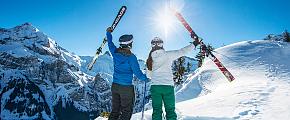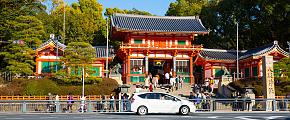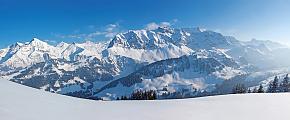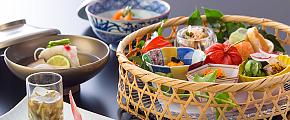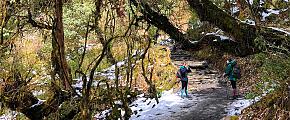A Complete Travel Guide to Nara
Are you interested in Japan's history and culture? If you are, don't miss a visit to Nara, one of Japan's most captivating and oldest cities. Nestled in the heart of Japan, the city of Nara is an indelibly quaint destination that is filled with a pleasant blend of natural beauty and historical treasures. As one of the cradles of Japanese history and culture and once Japan's capital from 710 to 784 AD, Nara boasts a vast collection of iconic ancient temples and serene gardens, as well as symbolically friendly deer. Nara is well worth a visit. Here we have a complete travel guide to Nara, from its must-visit attractions to the best time to visit and transportation options. Keep reading, and you'll gravitate more toward this beautiful city.
Things to See and Do in Nara
Explore Nara's Temples and Shrines
As an old city that carries over 1300 years of Japanese history, Nara is home to numerous temples and shrines, which play an important role in recording the past of Japan. Nara has eight world heritage sites, including six ancient temples and shrines: Todaiji Temple, Kasuga-Taisha Shrine, Gango-ji Temple, Yakushi-ji Temple, Toshodai-ji Temple, and Kofuku-ji Temple. One of the most imposing temples is Todaiji Temple. It features a colossal wooden structure that is famous for the Daibutsu-sama, or "Great Buddha". The statue, one of the largest bronze Buddhas in the world, stands 15 meters high with a 5-meter-tall face. Another iconic site is Kasuga-Taisha, or Kasuga Grand Shrine, an 8th-century building known for its antique lantern-lined pathways. The rewarding thing here is joining in the Chohai morning worship ritual. You can enjoy the morning's holiness and purity or write your blessing on a dangling heart-shaped ema to pray for happiness and prosperity.
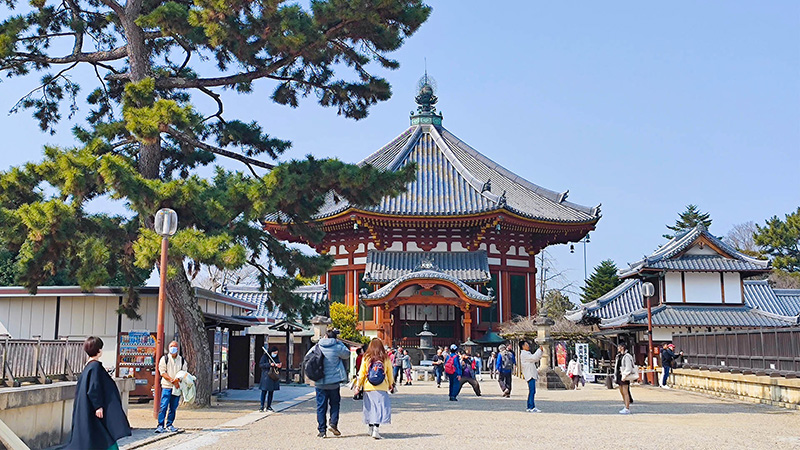 Nara's Temples and Shrines
Nara's Temples and Shrines
Explore Nara Park and Play with the Friendly Deer
Nara Park must be added to your top destination list when you travel around Nara. The park is located in the heart of Nara and has a history of over 140 years. In fact, Nara Park is fringed by the city's popular attractions, such as Todaiji Temple, Kasuga Grand Shrine, Kofukuji Temple, and the Nara National Museum, making it an easy place to stop off. You have a wonderful feeling of peace and serenity when viewing the Ukimidou Pavilion overshadowing the crystal-clear pond and strolling through the foliage-adorned path. It also offers lush, refreshing vegetation that changes season by season. Nara Park is inhabited by hundreds of freely roaming sika deer. They are designated as the park's natural monuments and are under protection. The deer have no fear of man, so visitors can interact with these friendly creatures in very close proximity. You can feed the deer in the park on "deer-crackers" (Shika-senbei), exclusively sold by the WNOW company. It can be one of the most memorable moments of your life to have a great time with these lovely animals in the park.
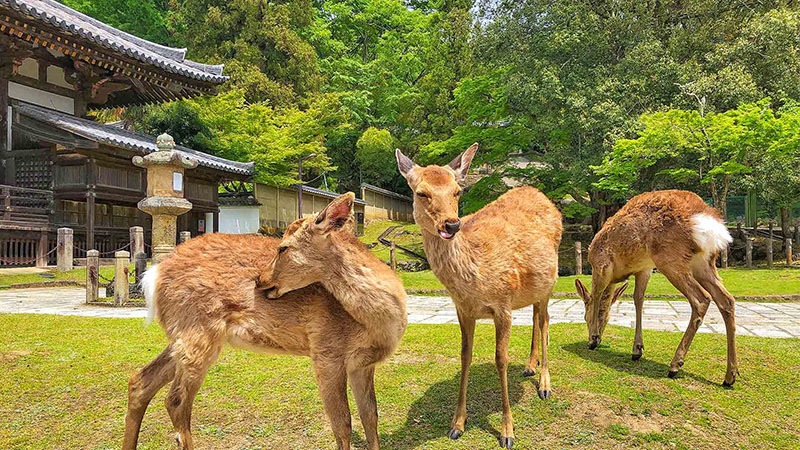 Deer in Nara Park
Deer in Nara Park
Unwind in Beautiful Gardens
A wonderful collection of great gardens forms a very alluring part of the city of Nara. If you're seeking a haven of peace and tranquility to escape from the hustle and bustle, the gardens in Nara are an excellent destination to help you unwind. Japanese gardens offer different scenery in all seasons. You can catch a gorgeous sight of cherry blossoms in the spring and bloomy peonies and azaleas in the summer. Autumn brings striking maple leaves, and winter gives you opportunities to admire plum blossoms and camellias. Among many great gardens, you can head to Isuien and Yoshikien Gardens. They are just next door to each other. Isuien Garden features a beautiful lotus-dotted pond, meticulously arranged plants, and traditional tea houses, while Yoshikien Garden has its own natural stream and meandering paths adorned by vivid plants. These gardens provide a peaceful setting for unwinding, appreciating nature, and taking in the essence of classic Japanese design.
Visit Nara National Museum
If you enjoy soaking up artistic collections, you should not miss a visit to the Nara National Museum. It will be a rewarding part of your visit to Nara Park. The Nara National Museum, which opened its doors in 1889, is a prime example of a Meiji-era structure designed in the West. This museum displays over 100 works of Buddhist art. You have a great feast of traditional Japanese art, which includes Buddhist statues, images, paintings, scrolls, and altar articles from various periods in Japanese history. The museum holds a regular exhibition every autumn, with large amounts of treasures like Buddhist sculptures and archaeological artifacts on view. The museum consists of four galleries: Nara Buddhist Sculpture Hall, the East Wing and West Wing, and the Ritual Bronzes Gallery. You can see a solemn display of prime national treasures from Japan, among which some ancient Chinese archaeological relics like bronze wares can be found in one of the galleries. If you're an art enthusiast, it could be fun to watch such cultural exhibitions.
Where to stay in Nara
The city of Nara features many impressive images that attract a myriad of visitors to its splendid nature and serene stillness. If you don't miss the wonder but look for great enjoyment in the city, a wonderful stay in Nara is necessary. Here we recommend the four best areas to stay in this ancient city in consideration of distance from main attractions and accommodation rates.
Near JR Nara Station
Within the heart of Nara, the area consists of the JR Nara Station on its western part. The station is connected to many stations in other nearby cities like Kyoto, Tofukuji, Osaka, and Nagoya. From the JR station, it only takes you around 20 minutes to get to the city's main attractions. Tourist buses run around the station. You can take a bus to Nara Park if you're tired of walking. The area is crisscrossed with streets full of restaurants, food stores, hotels, and bars. You can expect to find plenty of local foods like Kakinoha Zushi (sushi wrapped in persimmon leaf), Kuzu Mochi (small rice cakes covered with bean paste), and Miwa Somen (local thin, chewy noodles). Recommended lodgings near JR Station are Hotel Pokune, Yuzan Apartment Sanjo, Nara Guesthouse Kaede, and more.
Near Kintetsu Nara Station
Nara Station on the Kintetsu Lines shares the same proximity to primary historical sites as Nara Park, which is a 6-minute walk away. Whether you're after an escape from the noise or a hectic stay, the nearby Kintetsu Nara Station has you covered both ways. For a more peaceful experience, you can find Sarusawa Pond, a popular spot for photographing its reflection of Kofukuji Temple's pagoda. As for buzzing activities, the area is also near a shopping street, Higashimuki Shotengai, with all sorts of exquisite stores, shops, and restaurants selling historic handicrafts, traditional Japanese clothing, and Japanese cuisine. There are a wide range of accommodation choices. You can choose the budget one, like Kasuga Hotel, or the luxurious ryokan with a fascinating view of Kofukuji Temple's pagoda.
Naramachi
As the preserved historic district of Nara, Naramachi once flourished during the Edo period (1603-1868). Staying in Naramachi is a perfect alternative if you're more likely to explore the traditional Japanese atmosphere and catch a glimpse into the daily lives of local people. Naramachi has a labyrinth of lanes lined by well-preserved machiya, traditional wooden townhouses, many of which have been converted into cafes, shops, hotels, and art galleries. There are Gango-ji Temple, Koshino Le, and other offbeat landmarks within the area. It's only a 20-minute walk to Naramachi from Kintetsu Nara Station and JR Nara Station. You can stay at machiya-transformed guesthouses and ryokans like Guesthouse Tamura, Nara Imai House, and Nipponia Hotel.
Near Nara Park
Staying near Nara Park is, without question, a quick decision for your family. The park enjoys a central location and is home to a cluster of cultural sites, including Tdai-ji Temple, Kofuku-ji Temple, Kasuga-Taisha Shrine, Isui-en Garden, and more. There are over 1,000 sika deer roaming in the park. Staying near here brings you abundant natural beauty and a short distance to Kintetsu Nara Station. Moreover, the nearby area offers high-quality Japanese-style ryokans and modern hotels, such as Kotonoyado Musashino, Tsukihitei, Nara Hotel, and Hotel Pagoda.
The Best Time to Visit
Nara belongs to a generally mild climate with several months of rainy season. As a matter of fact, the climate bestows the city with four unique seasons, each presenting its own natural landscapes and highlights. You can explore something particular during different seasons.
The most popular times to visit Nara are in the spring (March-May) and autumn (September-November). The temperature in spring and fall averages pleasantly between 12°C and 16°C, with relatively low humidity. Spring is one of Nara's most imposing seasons when the cherry blossoms are in full bloom. You can catch the most breathtaking view of such violent pink in some locations of the city, like Nara Park, Tdai-ji, and Mount Wakakusa, between late March and early April. If you want to avoid the busy crowds, a visit from mid- to late-May is a credible alternative. Autumn is another amazing season to capture the natural beauties of Nara. The season brings the city incredible views of orange, yellow, and red leaves. You can enjoy this amazement in Tdai-ji or Isui-en gardens.
 Nara in Spring
Nara in Spring
The temperature in summer averages 24°C, reaching a high of around 30°C in the hottest month of August. Summer may not be the most comfortable time to visit due to high chances of rainfall, but if you're expecting budget lodging and cultural events, this season is an ideal option. Long and warm nights make summer a vibrant, festival-filled period in the year. You can travel during this time to participate in colorful light festivals, such as the famous Nara Tokae Lantern Festival and Kamotsuba Shrine Summer Festival. It is also an excellent time to go swimming and hiking in the cool highlands.
Nara in winter, from December to February, experiences below-zero temperatures. It can be chilly, but it is more likely to be dry and sunny. If you're looking for fewer crowds, you can choose to visit Nara during this off-season for tourism. The city has many wonderful celebrations held in winter, such as Wakakusa Yamayaki in January, a traditional Nara firework ceremony, the Nara Rurie Winter Illumination, and the Miuneyama Ice Festival in February. If you tend to experience a more hopping atmosphere in Nara, winter is good for you.
How to Get to Nara
For international flights, Nara is close to Osaka Airport and Kansai International Airport, which neighboring Osaka is home to, as well as Fukuoka Airport. If you plan a flight to Nara from abroad, you can land at one of the airports above and then travel directly to Nara by train or express bus, which always takes you around 1.5-2.5 hours to arrive. In terms of domestic travel, one of the easiest and quickest options is to take a bullet train. Nara has two main train stations: Nara Station and Kintetsu-Nara Station, which are separately operated by West Japan Railway (JR) and the Kintetsu Railway. These train services cover many nearby cities like Tokyo, Kyoto, Osaka, and Nagoya. You can take a direct train to both JR Nara and Kintetsu Nara from Kyoto and Osaka. It usually takes you 30-50 minutes. If you depart from Tokyo or Nagoya, you should change to a regular train at Kyoto Station. You may have a 2-3-hour journey between the two cities. Another economical option is to take express or limousine buses. Express bus services operate between Nara and Nagoya and the Shinjuku area of Tokyo, while limousine buses run to Nara from Kansai International Airport and Osaka Airport. You may spend about 70-90 minutes on the journey.
Useful Travel Tips for Nara's Visit
- Most of the attractions in Nara are accessible by walking, and they are close to each other. It takes plenty of time to explore the city on foot. It is necessary to wear comfortable shoes, especially when trekking along some uphill routes.
- Purchase the "Nara Visitor's Pass" for unlimited rides on buses within the city, or book your Japan Rail Pass (JR Pass) traveling between neighboring cities so that you can enjoy discounted admission with a single ticket and make huge savings.
- Deer are protected in Nara Park. Respect the deer and follow the guidelines when you are feeding and interacting with them. Remember not to chase or provoke the deer.
- Nara can be packed with travelers in the spring and autumn, especially during weekends and holidays. To avoid the crowds, think about going early in the morning or late in the day.
The city of Nara must be listed as one of your top destinations in Japan. No matter what you're expecting, Nara is full of charm and surprises. It is a nice destination to learn about Japanese history and culture in the form of ancient temples and shrines and indulge in nature with a riot of color and animation. The city has more rewarding things to explore with your kids. We hope our guide can help you make the most of your Japan Tour to Nara. You can keep in touch with us for the latest information, or you can prepare for your trip with Odynovo. We specialize in the organization of individual itineraries tailored to the needs and preferences of you and your kids. Travel with us, and we aim to create unforgettable memories in this remarkable city for you.
Quick Question
What Our Clients Say
Explore the latest verified reviews of Odynovo's travel services on Tripadvisor, Google, Trustpilot, Product Review and more trusted platforms.
SUBSCRIBE TO WIN A FREE TOUR
Subscribe to our newsletter for a chance to win a free 7-day tour to India! And more insider travel news, exclusive offers, and inspiration will be sent straight to your inbox. Check our previous newsletters and get some sparks.

